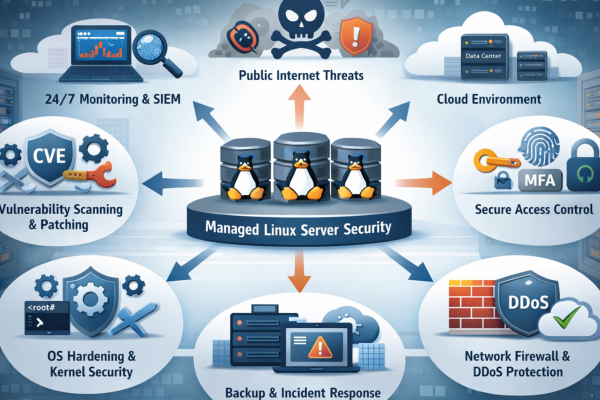Mastering Server Management: Best Practices for Effective Server Maintenance
Introduction
Server maintenance is a critical aspect of IT infrastructure management, ensuring the smooth operation of networks and applications. In this comprehensive guide, we delve into the nuances of server management, focusing on best practices for efficient server maintenance.
Understanding Server Management:
Server management encompasses a range of tasks aimed at ensuring servers operate optimally. From hardware upkeep to software updates, security patches, and performance monitoring, effective server management is vital for businesses reliant on digital systems.
Importance of Server Maintenance:
Regular server maintenance prevents downtime, enhances security, and boosts overall system performance. Neglecting server upkeep can lead to costly disruptions and security vulnerabilities, impacting productivity and customer satisfaction.
Key Components of Server Management:
- Hardware Maintenance: Regularly inspect and clean server hardware to prevent overheating and hardware failures. Replace outdated components as needed.
- Software Updates: Keep operating systems, applications, and firmware up to date to patch vulnerabilities and improve performance.
- Backup and Recovery: Implement robust backup solutions and regularly test recovery procedures to safeguard data against loss or corruption.
- Security Measures: Utilize firewalls, intrusion detection systems, and antivirus software to protect servers from cyber threats.
- Performance Monitoring: Monitor server performance metrics such as CPU usage, memory utilization, and network traffic to identify and address bottlenecks.
Key Components of Server Management:
Certainly, here are some additional best practices for effective server maintenance:
- Regularly Update Software and Firmware: Keep all server software, operating systems, applications, and firmware up to date with the latest patches and security updates to protect against vulnerabilities and ensure optimal performance.
- Manage Disk Space: Monitor disk space usage regularly and implement strategies such as disk cleanup, archiving old data, and using storage management tools to optimize disk space usage and prevent storage-related issues.
- Secure Access Controls: Implement strict access controls and authentication mechanisms to ensure that only authorized personnel can access and modify server configurations, files, and settings, reducing the risk of unauthorized access and data breaches.
- Implement Security Measures: Configure firewalls, intrusion detection systems (IDS), antivirus software, and other security measures to protect servers from external threats, malware, and cyberattacks.
- Regularly Review Logs: Monitor and review server logs, including system logs, security logs, and application logs, to detect anomalies, unauthorized activities, and potential security breaches, and take appropriate actions to address them.
- Perform Disaster Recovery Planning: Develop and regularly update a comprehensive disaster recovery plan that includes backup strategies, data recovery procedures, and contingency plans to minimize downtime and data loss in the event of disasters or emergencies.
- Conduct Capacity Planning: Monitor server resource utilization, including CPU, memory, storage, and network bandwidth, and perform capacity planning to anticipate future growth, scale resources accordingly, and avoid performance bottlenecks.
- Implement Change Management: Establish a formal change management process to document and track all changes made to server configurations, software updates, patches, and deployments, ensuring accountability, transparency, and risk mitigation.
- Conduct Performance Tuning: Fine-tune server configurations, optimize database queries, and adjust resource allocations based on performance metrics and analysis to improve system responsiveness, scalability, and efficiency.
Regular server maintenance prevents downtime, enhances security, and boosts overall system performance. Neglecting server upkeep can lead to costly disruptions and security vulnerabilities, impacting productivity and customer satisfaction.
Conclusion:
Effective server management is essential for maintaining the reliability, security, and performance of IT infrastructures. By following best practices such as creating maintenance schedules, automating routine tasks, and conducting regular audits, organizations can ensure smooth server operations and minimize the risk of disruptions. Prioritizing server maintenance is key to a robust and resilient digital ecosystem.
In summary, server management encompasses a wide range of tasks aimed at ensuring the smooth and secure operation of servers within an IT infrastructure. By implementing best practices for server maintenance, businesses can optimize performance, enhance security, and minimize downtime, ultimately supporting their overall success and competitiveness in today’s digital landscape.
Author






